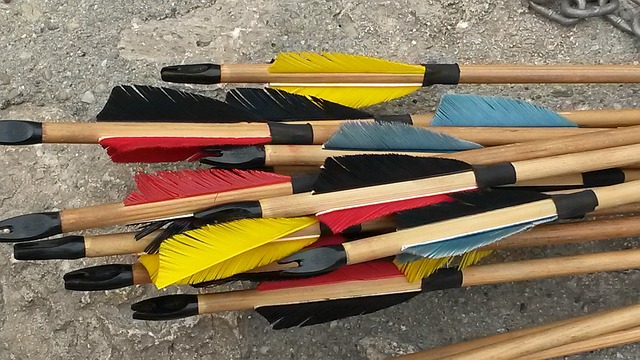
A bolt is an arrow.
Saeta is a concept that derives from the Latin word sagitta . It is, according to the first meaning mentioned in the dictionary of the Royal Spanish Academy ( RAE ), the weapon that has a point at one end and that is thrown at the target. At the opposite end to the tip, the arrow has feathers so that, once thrown, the weapon maintains its direction.
For example: “Seeing that his prey was escaping, the man threw the arrow with force” , “The arrow stuck in the chest of his victim, causing his death instantly” , “When the arrow hit the stone, his tip broke.”
Shoot arrows
Precisely in relation to this meaning, we have to expose the existence of the verb asaetear . With it we try to express the action of shooting saetas, that is, arrows. So, for example, starting from that we find the figure of Saint Sebastian , who is represented with arrows, since that is how he was seriously injured by the soldiers of Emperor Maximian.
The term saeta is also used to name the arrow that is part of a compass and the needle of clocks: “Try not to lose the compass during the expedition: its arrow will guide you” , “With your vision clouded by alcohol, the "old man couldn't see the arrow on the clock."

The compass needle can be called an arrow.
The concept in music
In terms of music , a religious song that is sung at certain celebrations is called saeta. Saetas are common in the processions that take place in some Spanish regions during Holy Week .
In Andalusia , Castilla la Mancha or Extremadura is where the saetas acquire the most prominence during the different processional outings. As a general rule, they are usually sung by a single person, standing on a balcony, in step with the image in question, who will stop or "dance" to the rhythmic rhythm of this song.
The saetas are made up of four or five octosyllable verses, which revolve around the characters of the Passion and which, currently, basically have a flamenco essence. Hence it is considered that the artists who have best interpreted them are La Niña de los Peines , José de la Tomasa , Antonio Chacón or Medina El Viejo .
“La Saeta” by Serrat
Without a doubt, the most popular saeta of all is “La Saeta” . It is a composition whose music belongs to the Catalan singer Joan Manuel Serrat , but whose lyrics are the property of the great Sevillian writer Antonio Machado .
In 1969 was when, for the first time, the aforementioned singer presented it, included in his album “Dedicado a Antonio Machado” , and since then it became a fundamental part of the musical culture in Spain .
The term in zoology and botany and as a nickname
The idea of arrow also appears in zoology (to name chaetognaths , aquatic animals that make up plankton) and in botany (the aquatic plant whose scientific name is Damasonium alisma is called water arrow ).
It is worth mentioning, finally, that the Argentine soccer player Alfredo Di Stéfano ( 1926 – 2014 ) was nicknamed the Blonde Arrow for his speed in moving on the playing field and for the color of his hair.
